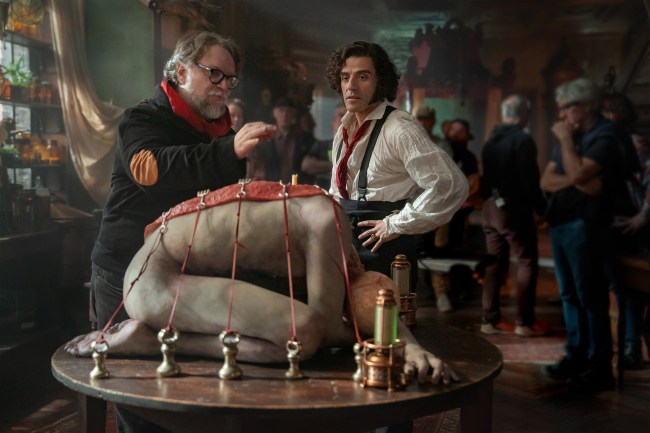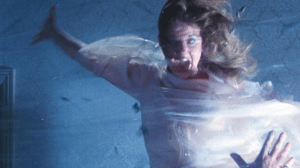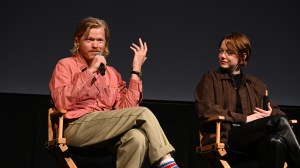Guillermo del Toro’s well-reviewed “Frankenstein” is now in limited theaters from Netflix, on its way to a shoo-in surfeit of Oscar nominations, especially for its crafts. (It’s also moving up in the Metacritic rankings.) Before the film heads to streaming on November 7, IndieWire’s “Screen Talk” caught up with one of the film’s producers, J. Miles Dale, who joins this week’s episode as a special guest. Dale won the Best Picture Oscar in 2018 for producing “The Shape of Water” and also oversaw del Toro’s noir remake of “Nightmare Alley” (2021) as well as the del Toro-produced “Scary Stories to Tell in the Dark” (2019).
On this week’s episode, Anne Thompson is fresh back from the Middleburg Film Festival in Virginia, which showed the importance of regional festivals as a building block to Oscar nominations. (Many of the awards-prognosticating cabal, including IndieWire’s Marcus Jones, were on the ground also.) Audience prizes went to Focus Features’ “Hamnet” from Chloé Zhao and Searchlight’s “Rental Family” from HIKARI, both Oscar contenders as we head deeper into the season.
Co-host Ryan Lattanzio previews AFI Fest, now underway in Los Angeles through the weekend and featuring films from “Springsteen: Deliver Me from Nowhere” (which brought The Boss himself for a performance at Hollywood and Highland) to the world premiere of “Song Sung Blue” and beloved indies like Israeli filmmaker Nadav Lapid’s audacious “Yes” and Max Silverman-Walker’s plaintive Josh O’Connor vehicle “Rebuilding.”
Recently, IndieWire tapped the AFI Fest programming team to share their picks for the best films to see.
Our special guest, producer Dale, has been working with Guillermo del Toro since he produced “Mama” (2013), which marked the directing debut of Andy Muschietti. He produced the FX series “The Strain” for four years, as well. Two period films, Best Picture Oscar winner “The Shape of Water” and Best Picture nominee “Nightmare Alley,” prepared Dale and his team for the daunting task of delivering del Toro’s two white whale movies: “Pinocchio” and “Frankenstein,” with a budget of $120 million, both backed by Netflix.
Del Toro saw James Whale’s “Frankenstein” when he was seven and read Mary Shelley’s classic when he was 11, said Dale. They discussed the film for years, as many potential backers passed on it. “When we realized we were going to do it,” said Dale, “we knew it was a hill to climb.” That’s because the project was weighted with expectations. Del Toro had been thinking about it for a long time, and the bar was high.
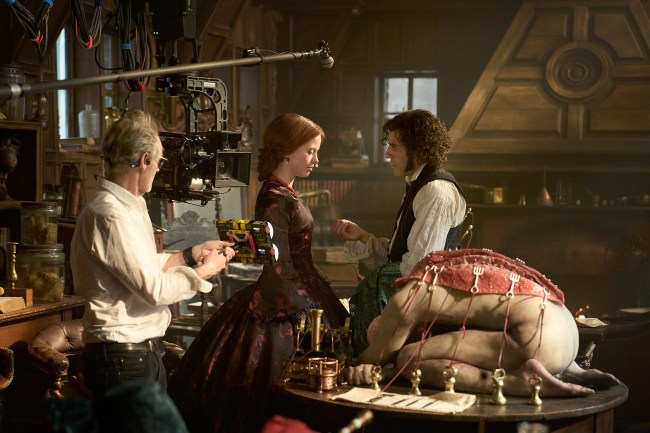 Cinematographer Dan Laustsen, Mia Goth as Elizabeth, and Oscar Isaac as Victor Frankenstein on the set of ‘Frankenstein’Ken Woroner/Netflix
Cinematographer Dan Laustsen, Mia Goth as Elizabeth, and Oscar Isaac as Victor Frankenstein on the set of ‘Frankenstein’Ken Woroner/Netflix
Luckily, it was not Dale’s first go-round. “My muscles and our collaborators’ stretched nicely to be ready for it,” he said. Del Toro’s philosophy of filmmaking: There are four legs. Costume design, production design, cinematography, and hair and makeup all work together, from color coding and contrasts to lighting.
The ball got rolling with Guy Davis, Del Toro’s longtime concept designer, as well as Bernie Wrightson’s “Frankenstein” book illustrations. As always, Del Toro gave his team “lots to look at,” said Dale. “Everyone comes together. Del Toro is a craft junkie. We made fabrics, the paint department was meticulous, the moss squad was laying moss. It got granular in terms of design.”
The biggest glitch came nine weeks out when Andrew Garfield fell out of availability. All the creature designs were customized to his face and body. Replacement Jacob Elordi was 6-feet-6-inches tall, which was a challenge for body sculptor Mike Hill, who had sculpted 42 pieces for Garfield. Elordi had wanted to play the creature, and here brings enormous empathy to him. But he had been playing a World War II prisoner in Justin Kurzel’s series “The Narrow Road to the Deep North” and had lost tons of weight. Now, he had “to stuff his face with pizzas to be a big strong monster,” said Dale. “It was something different every day.”
At the start of the movie, Elordi as the black-caped creature is convincingly large and terrifying. The production set up on a frozen lake a few hours north of Toronto, where Victor Frankenstein (Oscar Isaac) arrives on a sled, facing driving snow (blown by giant Volkswagen engines). The 19th-century sailing ship with authentic rigging was built in a parking lot outside their Toronto studio, with an ice esplanade to get up to it. “It was 130 feet long and had to hold 100 or more people, sailors and crew,” said Dale. When you see the creature fall into the lake, it’s a tank. And when he pushes the ship, “it’s for real. The ship is on a giant gimbal. It was a major engineering project. It makes your brain hurt some days.”
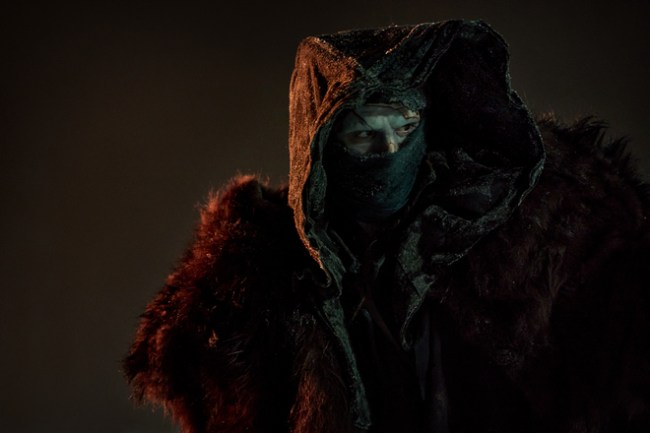 ‘Frankenstein’Netflix
‘Frankenstein’Netflix
The film’s other design feat was Frankenstein’s lab. They built a water tower comprised of eight different sets. “The giant exterior was built on the fairground, where we made the carnival for ‘Nightmare Alley,’” said Dale. “The foyer lobby set, the lab, in its various evolutions, visitors’ quarters, the top of the tower, and where he climbs to the top, the monster lair, and the escape water chute, which is not such a subtle metaphor for a birth canal. The exterior, which took four months to build and we shot for three days, provided the base for the tower.” Finally, there were also handmade miniatures. Del Toro tries to minimize the use of CG in order to emphasize the craft.
The final cut is two and a half hours, whittled down from over three hours. There was talk of two movies, but they decided to stick to one. It was important to del Toro to be faithful to the original Shelley. “He does identify with monsters,” said Dale. “He wanted to make sure to get the creature’s point of view. That’s unique about our film. He speaks and articulates.”
Listen to this week’s episode below or on your favorite podcast platform.

